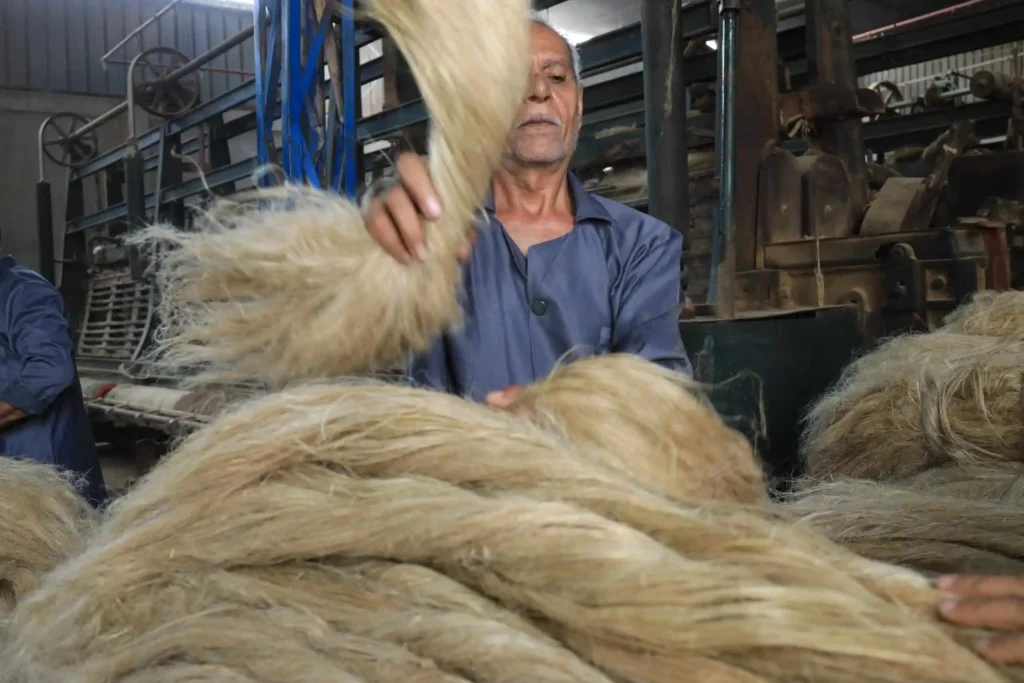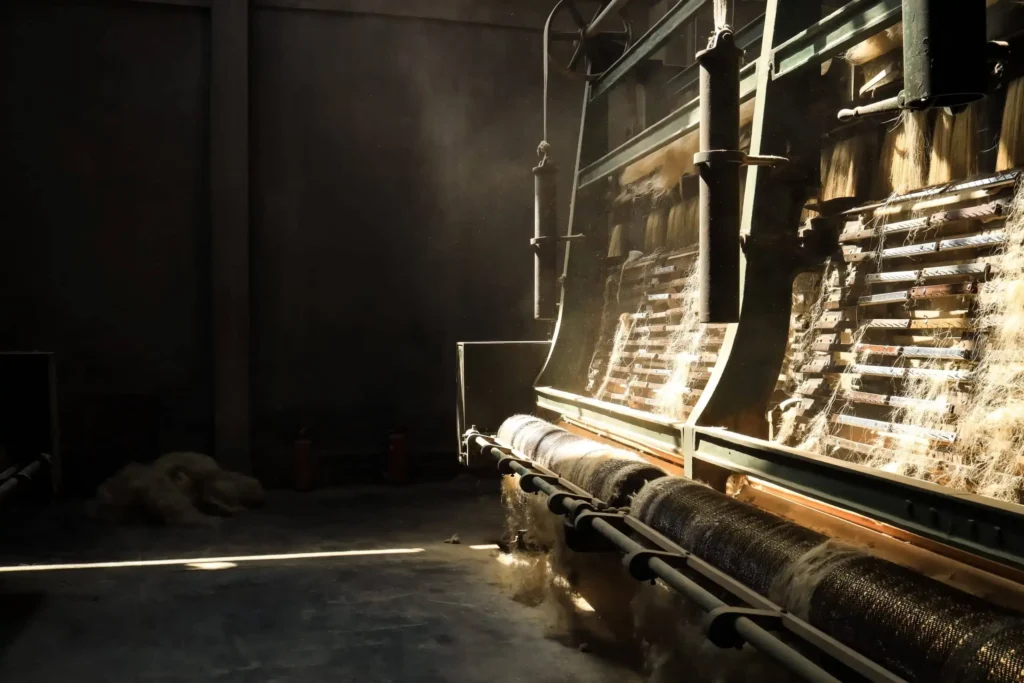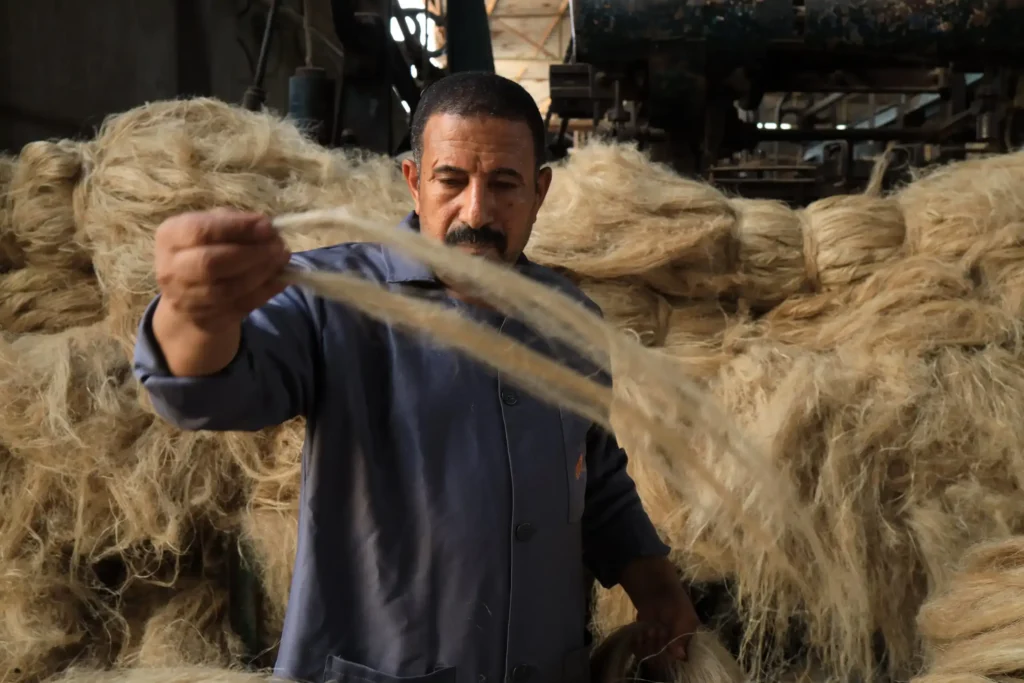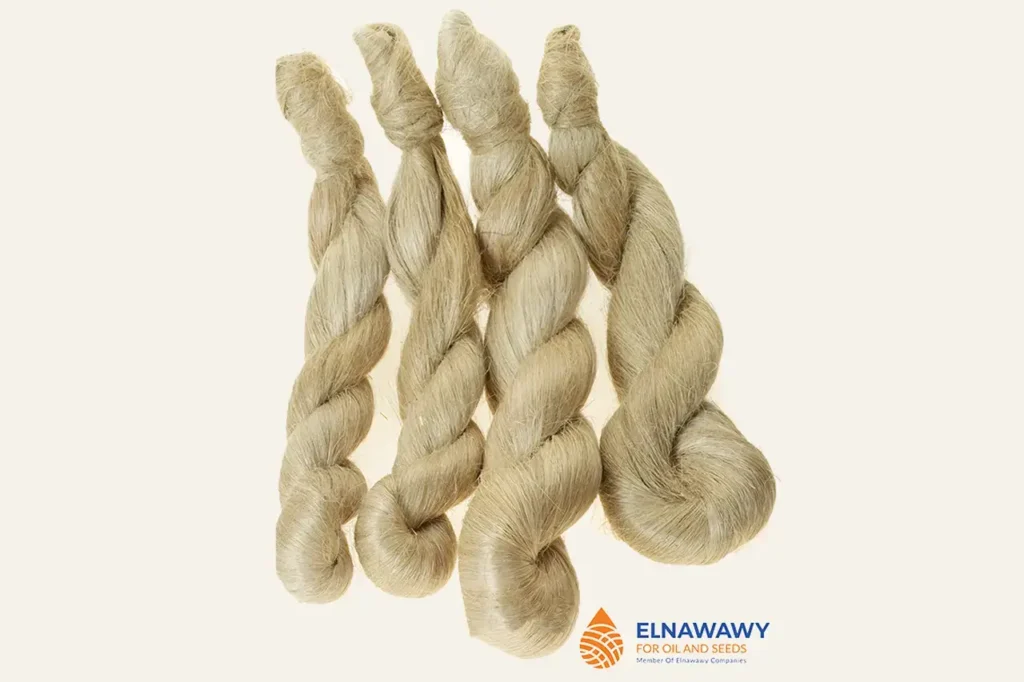Egyptian Flax Fibers & Raw Material
Flax fiber is one of the oldest natural fibers used for textiles, dating back to ancient civilizations in Egypt and China. Today, flax fiber is gaining popularity again as a sustainable and eco-friendly alternative to synthetic fibers, such as polyester and nylon, which are derived from non-renewable resources and have significant environmental impacts.
Our Offerings of Flax Fibers
Flax fibers go through several stages of dressing or preparation before spinning. Of these stages, “scutching” and “hackling” are very important. These stages remove the woody straws from the fibers and straighten the fibers.

Raw Long Fiber (L.F.)
We sell long fibers of raw flax without hackling.
We offer premium-quality Egyptian Raw Long Flax Fibers obtained after scutching. At this stage, fibers retain their natural length and strength, perfect for textile production, composite materials & and specialty paper manufacturing.
This versatile form allows you flexibility in further processing according to your specific needs.

Hackled Long Fiber (Hackled L.F.)
We also offer to sell the long fibers of flax after “hackling” them. In our hackling machinery (shown in the image), the fibers pass through combs with varying pin densities.
Hackling removes any last bit of straws and impurities from the fibers, separates the short fibers (called “Machine Tow”) from the long fibers, and straightens the fibers.

Machine Tow (M.T.)
We offer to sell Machine Tow (M.T.) fibers. During the hackling process, the combs separate the short fibers from the long fibers. The short fibers are called “Machine Tow”.
Machine tow is considered medium grade flax fiber. Its fibers are not as long as the long fibers. It is a very good fiber for spinning yarn count from 0.2 Nm up to 6 Nm.

Arrous (Resctched Tow)
We offer to sell Rescutched Tow (R.T.) Arrous fibers. Rescutched tow fibers are the result of “rescutching” the fibers.
The scutching process cleans the fiber from impurities and straw. However, it also “wastes” some fibers. The waste result of scutching can go through a process of “rescutching” to further separate the straws and impurities from the wasted fibers. The result “rescutched” fiber is called Arrous. It is considered the lowest grade of flax fibers.
Why Choose Egyptian Flax Fibers?
Egyptian Flax
Where Linen’s True Origins
Lie – In Egypt, Not Europe
Egyptian flax fibers are globally renowned for their superior quality, strength, and purity, largely due to Egypt’s ideal growing conditions—fertile soil, optimal sunlight, and carefully maintained traditional harvesting methods.
These factors produce fibers known for exceptional strength, durability, and natural beauty, making Egyptian flax highly sought after for luxury textile applications worldwide.
